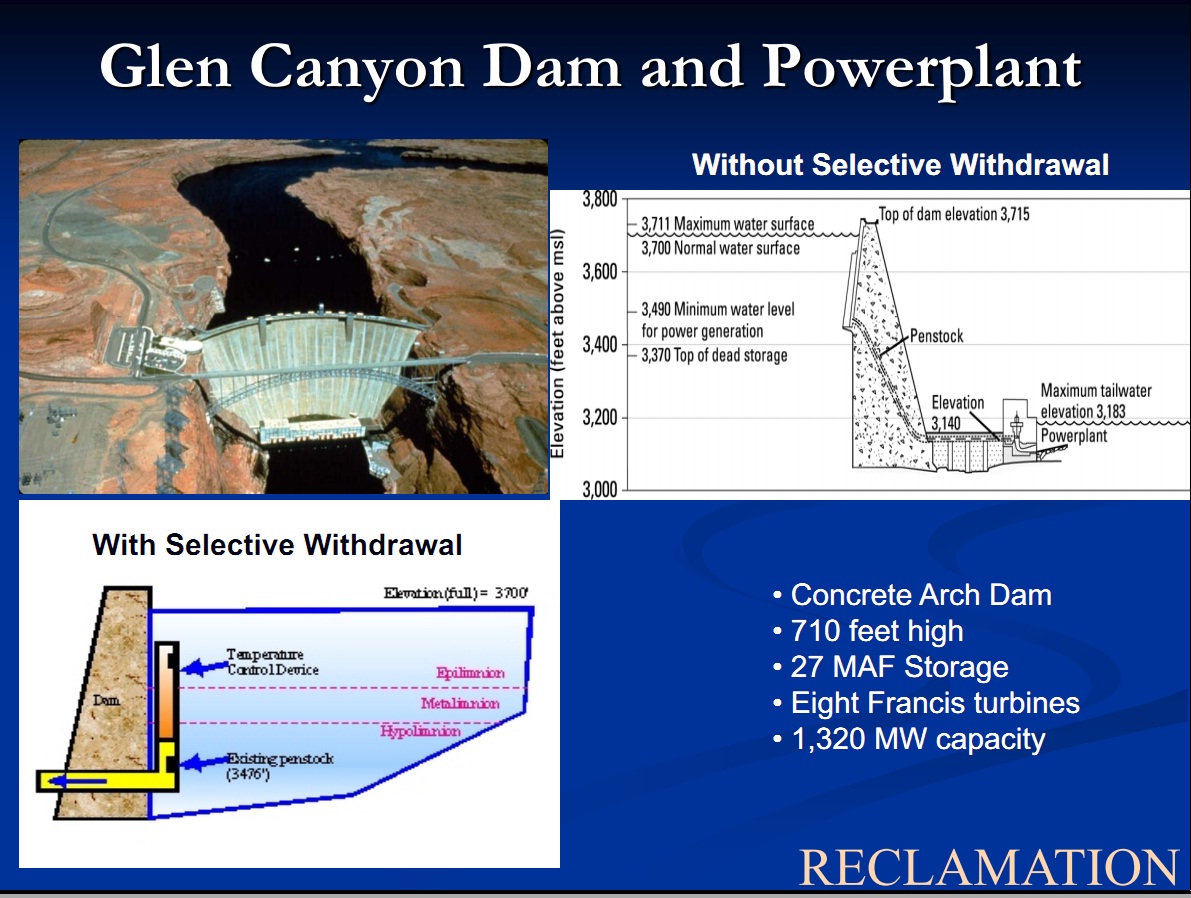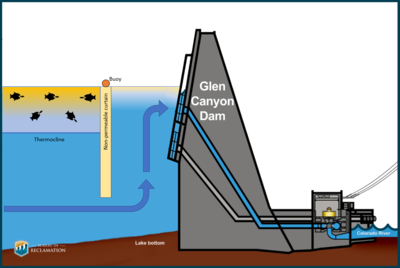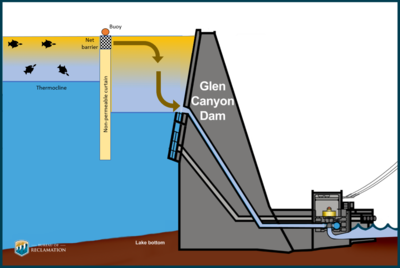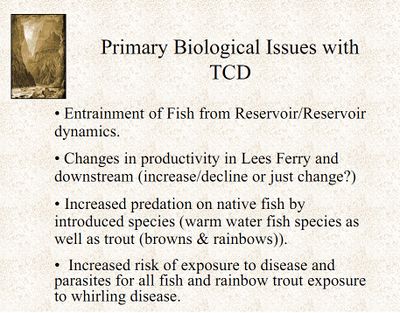- Fact Sheets
- Training
- Knowledge Assessments
- Trivia
- Key Topics
Difference between revisions of "TCD Learning Page"
(fix) |
Cellsworth (Talk | contribs) |
||
| (21 intermediate revisions by the same user not shown) | |||
| Line 12: | Line 12: | ||
<tr style='mso-yfti-irow:0;mso-yfti-firstrow:yes'> | <tr style='mso-yfti-irow:0;mso-yfti-firstrow:yes'> | ||
<td width=40% valign=bottom align=left style='width:2.05in;padding:0in 5.4pt 0in 5.4pt'> | <td width=40% valign=bottom align=left style='width:2.05in;padding:0in 5.4pt 0in 5.4pt'> | ||
| − | <p class=MsoNormal> | + | <p class=MsoNormal></p> |
</td> | </td> | ||
</tr> | </tr> | ||
</table> | </table> | ||
| + | |||
| + | [[Image:TCD Example -PIC.jpg|center|400px]] | ||
<!-- | <!-- | ||
------------Portal list on righthand side----------> | ------------Portal list on righthand side----------> | ||
| − | |style="width:60%; font-size: | + | |style="width:60%; font-size:120%;"| |
| − | + | ||
| − | + | ||
| − | + | ||
| + | == Temperature Control == | ||
| + | Before Glen Canyon Dam was constructed, the natural flow cycle of the Colorado River included a seasonal warming trend in the late summer as the water temperature would increase from the near freezing winter temperature to approximately 85 degrees. Once the dam was constructed, the temperature of the water released downstream became relatively steady at between 45-50 degrees as water was drawn year round from the deep, fixed level penstock intakes (used for power production). Near the dam, these cold releases are tolerated by the trout fishery, but as this water moves downstream, it only warms to about 60 degrees which is not warm enough to allow endangered, native, warm water fish, such as the humpback chub, to reproduce in the mainstem of the Colorado River. | ||
| + | The U.S. Fish and Wildlife Service (FWS) issued a biological opinion in 1994, that recommended that temperature control modifications to the existing intake structures at the dam, be investigated by the Bureau of Reclamation (Reclamation). Temperature control modifications would allow for water to be drawn from different depths of the reservoir. Instead of only drawing water from the existing intake openings which are fairly deep and cold, the temperature control modifications would allow for water to be drawn from closer to the reservoir surface, which is much warmer. The goal would be to determine the right temperature combination of the cold and warmer water withdrawals to benefit the native endangered fish, while avoiding the possibility of encouraging competitors (non-native, warm-water fish) into the system. [https://www.usbr.gov/uc/rm/amp/tcd/] | ||
|}<!-- | |}<!-- | ||
| Line 31: | Line 33: | ||
----------Strapline immediately below banner----------> | ----------Strapline immediately below banner----------> | ||
{| style="width:100%; height:50px" border=1px solid #ccc; background:#cedff2 | {| style="width:100%; height:50px" border=1px solid #ccc; background:#cedff2 | ||
| − | ! style="width=33%; background:#cedff2;" | | + | ! style="width=33%; background:#cedff2;" | <br> |
| − | ! style="width=33%; background:#cedff2;" | | + | ! style="width=33%; background:#cedff2;" | <br> |
| − | + | ! style="width=33%; background:#cedff2;" | <br> | |
| − | ! style="width=33%; background:#cedff2;" | | + | |
|} | |} | ||
| Line 40: | Line 41: | ||
|class="MainPageBG" style="width:55%; border:1px solid #cef2e0; background:#f5faff; vertical-align:top; color:#000;"| | |class="MainPageBG" style="width:55%; border:1px solid #cef2e0; background:#f5faff; vertical-align:top; color:#000;"| | ||
{|width="100%" cellpadding="2" cellspacing="5" style="vertical-align:top; background:#f5faff;" | {|width="100%" cellpadding="2" cellspacing="5" style="vertical-align:top; background:#f5faff;" | ||
| − | ! <h2 style="margin:0; background:#cedff2; font-size:120%; font-weight:bold; border:1px solid #a3bfb1; text-align:left; color:#000; padding:0.2em 0.4em;"> | + | ! <h2 style="margin:0; background:#cedff2; font-size:120%; font-weight:bold; border:1px solid #a3bfb1; text-align:left; color:#000; padding:0.2em 0.4em;"> Need for a warm-water or a cold-water TCD? </h2> |
| − | + | ||
| − | + | ||
|- | |- | ||
|style="color:#000;"| | |style="color:#000;"| | ||
| + | |||
| + | ===Warm-water TCD=== | ||
| + | *Increase native fish growth (and survival) | ||
| + | *Increase foodbase production and diversity | ||
| + | |||
| + | ===Cold-water TCD=== | ||
| + | *Decrease threat of nonnative fish proliferation | ||
| + | *Provide cold water to sustain the Lees Ferry trout fishery | ||
|- | |- | ||
| − | ! <h2 style="margin:0; background:#cedff2; font-size:120%; font-weight:bold; border:1px solid # | + | ! <h2 style="margin:0; background:#cedff2; font-size:120%; font-weight:bold; border:1px solid #a3b0bf; text-align:left; color:#000; padding:0.2em 0.4em;"> Types of Temperature Control </h2> |
|- | |- | ||
| − | |style="color:#000;"| | + | |style="color:#000;"| |
| + | =='''Thermal Curtain'''== | ||
| + | Examples: Whiskeytown Reservoir, Lewiston Reservoir, Burrendong Dam. | ||
| + | A thermal curtain is a type of selective withdrawal structure that can be installed on existing facilities without interrupting operations. Depending on how a thermal curtain is configured, they can be used to either increase or decrease release temperatures. The thermal curtain is constructed of a non-permeable material that is installed in the forebay of a reservoir. If cooler release temperatures are desired, the thermal curtain is configured to extend from the water’s surface down to the thermocline. This blocks the warmer, surface water from entering the dam’s intakes and being released downstream. If warmer release temperatures are desired, the thermal curtain is configured to extend from the thermocline down to the bottom of the reservoir. This blocks the colder, sub-surface water from entering the dam’s intakes and being released downstream. Thermal curtains can also be configured to cool water temperatures in the dam’s forebay to create a behavioral barrier to warmwater fish entrainment through the dam. Behavioral barriers are generally considered more effective than mechanical barriers (i.e. screens, nets, electrical fields, etc.) in reducing fish entrainment. Thermal curtains have been successfully deployed in both warm-water and cold-water configurations. Initial modeling has suggested a thermal curtain installed at Glen Canyon Dam could reduce water temperatures in the forebay and lower release temperatures enough to reach downstream temperature targets without the need of bypass. This potentially resolves issues associated with reduced hydropower generation and impacts to the Basin Fund, which is needed to fund the operations and maintenance of the CRSP system, while also reducing warm-water fish entrainment and providing increased control of release temperatures to meet downstream biological goals. | ||
| − | + | [[Image:Thermal Curtain coldwater.png|thumb|center|400px|]] | |
| − | + | [[Image:Thermal Curtain warmwater.png|thumb|center|400px|]] | |
| − | + | =='''Selective Withdrawal Structure ''' == | |
| + | Examples: Shasta Dam, Folsom Dam, Jordanelle Dam, Flaming Gorge Dam, Hungry Horse Dam, Cougar Dam, Applegate Lake. | ||
| − | + | A selective temperature withdrawal system is a rigid steel structures on the upstream face of the dam to enclose the penstock intakes (Svoboda 2020). Selective temperature withdrawal systems can be new external-frame structures that are attached to the dam or retrofit modifications to existing dam features, such as adding gates to the trash rack structure around the penstock intakes (Svoboda 2020). A previous selective temperature withdrawal system has been considered for the Glen Canyon Dam in the early 2007-2008 (Vermeyen 2011). Earlier proposals for the selective temperature withdrawal system were focused on warming downstream releases but the design was never finished. | |
| + | |||
| + | [[Image:HungryHorseTCD.png|thumb|center|400px|]] | ||
| − | + | [[Image:GlenCanyonTCD.png|thumb|center|400px|]] | |
| − | + | =='''Destratification: (Bubblers, Pumps, etc.)'''== | |
| − | + | Mixing thermal strata in the GCD forebay that results in substantial cooling during times of otherwise warm water releases (typically summer through fall) is likely to reduce or eliminate smallmouth bass spawning in the mainstem Colorado River below the dam. Also, mixing thermal strata in the GCD forebay and cooling the water would likely reduce the number of warmwater nonnative fish present in the forebay, including smallmouth bass. Smallmouth bass would likely move out of the area to seek warmer waters (Carter et al., 2012) such as the shallow, littoral habitat found in nearby Wahweap Bay. | |
| − | + | =='''Floating Pumping Platform or Trunnion Cold Water Withdrawal'''== | |
| − | + | Two different modifications are being suggested as direct piping of cold water to the intake. One proposed solution came from a 2020 technology search by yet2 sponsored by the Bureau of Reclamation focused on new technologies to control water temperature of reservoir release flows. This proposed solution would be a floating pumping platform that could be placed into the forebay to pump water at a fixed or variable water depth directly to the intake of the penstock (Makai Ocean Engineering; Figure 1). Difference variations for this model could range from several pumping stations suppling cold water to the penstocks or only a selective few of penstocks. A second proposed solution would be Trunnion cold water withdrawal. The idea behind this system is that a pipe is hinged and sealed at the intake to bring in cold water (Sherman 2000; Figure 2). For both suggestions, the theory is that enough cold water could be mixed in the penstock to reduce temperatures discharging from the dam. | |
| − | ''' | + | =='''Bypass'''== |
| − | + | ||
| − | + | This is a continuation of current operations at Glen Canyon Dam (GCD) developed as part of the Smallmouth Bass Supplemental Environmental Impact Statement (SEIS). The SEIS was finalized in June of 2024 and the Record of Decision was signed and implemented in July 2024. There are 5 possible options for GCD releases to keep water temperatures at river mile 61 in Grand Canyon at or below 15.5°C. For a more complete summary and discussion of flow alternatives, please refer to the Final SEIS (Bureau of Reclamation, 2024). | |
| − | . | + | The total bypassed volume to date (July 9 - 18, 2024) is approximately 150,000 acre-feet or ~30% of the total daily release volume. Approximately 1°C of cooling is being observed at Lees Ferry (RM 0). Full effects of bypass at RM61 are still being evaluated. Water temperatures at RM 61 are estimated to remain over the 15.5°C threshold until November 1 and thus, bypass would be required for most of the summer and fall, a period of 16 weeks. |
| − | . | + | The SEIS estimated an average hydropower impact from the Cool Mix alternative of $61.73 million (226.29 GWh) over a 45-month period (tables 3-12 and 3-17 in Bureau of Reclamation, 2024). Bypassed water does not produce hydropower and replacement costs are estimated to be ~$1 to $2 million per week (WAPA 2024, personal communication). Observed costs are tracking estimates presented in the SEIS. |
| + | |} | ||
| + | <!-- | ||
| + | --------------------------------ADDITIONAL-------------------------------> | ||
| + | |class="MainPageBG" style="width:45%; border:1px solid #cedff2; background:#f5faff; vertical-align:top;"| | ||
| + | {| width="100%" cellpadding="2" cellspacing="5" style="vertical-align:top; background:#f5faff;" | ||
| + | ! <h2 style="margin:0; background:#cedff2; font-size:120%; font-weight:bold; border:1px solid #a3b0bf; text-align:left; color:#000; padding:0.2em 0.4em;">Links</h2> | ||
| + | |- | ||
| + | |style="color:#000;"| | ||
| + | *[http://www.usbr.gov/uc/rm/amp/tcd// Reclamation's TCD Page] | ||
| + | *[http://gcdamp.com/index.php?title=TEMPERATURE Temperature Page] | ||
| + | *[https://gcdamp.com/index.php/Entrainment Entrainment Page] | ||
| + | |- | ||
| + | ! <h2 style="margin:0; background:#cedff2; font-size:120%; font-weight:bold; border:1px solid #a3b0bf; text-align:left; color:#000; padding:0.2em 0.4em;"> Presentations and Papers </h2> | ||
| + | |- | ||
| + | |style="color:#000;"| | ||
| − | + | '''2024''' | |
| + | *[https://www.usbr.gov/uc/progact/amp/twg/2024-01-25-twg-meeting/20240125-TWGMeeting-ThermalCurtainExclusionNet-508-UCRO.pdf Thermal Curtain/Exclusion Net ] | ||
| + | '''2021''' | ||
| + | *[[Media:Pennock-Gido2021 SpatialAndTemporalDynamicsOfFishInLakePowell.pdf| Pennock and Gido. 2021. Spatial and temporal dynamics of fish assemblages in a desert reservoir (Lake Powell) over 38 years. Hydrobiologia]] | ||
| + | '''2018''' | ||
| + | *[https://www.usbr.gov/uc/progact/amp/twg/2018-10-10-twg-meeting/Attach_01.pdf Temperature Control Device Update PPT] | ||
| + | *[https://www.usbr.gov/uc/progact/amp/amwg/2018-08-22-amwg-meeting/Attach_03_rev.pdf Temperature Control Device Update PPT] | ||
| + | *[https://www.usbr.gov/uc/progact/amp/twg/2018-04-23-twg-meeting/Attach_13.pdf The 21st Century Colorado River Hot Drought and Implications for the Future PPT] | ||
| + | '''Older presentations''' | ||
| + | *[https://www.usbr.gov/uc/progact/amp/amwg/2010-08-24-amwg-meeting/Attach_12a.pdf 100824_AMWG Meeting- Attachment 12.a] | ||
| + | *[https://www.usbr.gov/uc/progact/amp/amwg/2001-04-12-amwg-meeting/Attach_08a.pdf TCD PowerPoint Presentation_April 2001 AMWG] | ||
| + | *[https://www.usbr.gov/uc/progact/amp/amwg/2001-04-12-amwg-meeting/Attach_08b.pdf TCD Summary_April 2001 AMWG] | ||
| + | *[https://www.usbr.gov/uc/progact/amp/amwg/2001-01-11-amwg-meeting/Attach_20.pdf TCD Workshop Update - PowerPoint Presentation_Jan 2001 AMWG] | ||
| + | *[https://www.usbr.gov/uc/progact/amp/amwg/2000-01-20-amwg-meeting/Attach_13.pdf TCD Monitoring Presentation_Jan 2000 AMWG] | ||
| + | *[https://www.usbr.gov/uc/progact/amp/amwg/1997-09-10-amwg-meeting/Attach_10.pdf Temperature Control Device Update_Sept. 1997 AMWG] | ||
| + | |- | ||
| + | ! <h2 style="margin:0; background:#cedff2; font-size:120%; font-weight:bold; border:1px solid #a3b0bf; text-align:left; color:#000; padding:0.2em 0.4em;"> TCD Timeline </h2> | ||
| + | |- | ||
| + | |style="color:#000;"| | ||
| + | In the late 1990s, Reclamation investigated the potential for a temperature control device to increase release temperatures following a prolonged period of cool water releases from GCD. A final design for a warm water temperature control device on two of the eight penstocks was completed in 2007 with a cost estimate of $71 million. Following the 2016 Long Term Experimental and Management Plan Environmental Impact Statement (LTEMP EIS), Reclamation committed to continued investigations of a temperature control device and fish escapement options. The following is a chronology of the studies and reports related to temperature control and fish exclusion at Glen Canyon Dam: | ||
| + | '''Phase 1: A Warm-Water Temperature Control Device (TCD)''' | ||
| + | *1997: Value Planning Study (Reclamation 1997a) | ||
| + | *1997: Feasibility Study (Reclamation 1997b) | ||
| + | *1999: Draft Environmental Assessment (Reclamation 1999) | ||
| + | *1999: Physical Model Study (Vermeyen 1999) | ||
| + | *2000-2004: Reservoir Modeling of Selective Withdrawal Options (Cole and Wells 2003) | ||
| + | *2003: Survey of Selective Withdrawal Systems (Vermeyen et al 2003) | ||
| + | *2004-2006: Feasibility Studies to investigate a wider range of withdrawal capacity. | ||
| + | *2005: Economics of TCD Operation on Hydropower Revenues | ||
| + | *2006: Value Engineering Study | ||
| + | *2006: Constructability Review (Reclamation 2006a) | ||
| + | *2006: Design, Estimating and Construction Review | ||
| + | *2006-2007: Final Design (Reclamation 2007) | ||
| + | *2008: USFWS Biological Opinion identified concerns with nonnative fish expansion and having a TCD that could only release warm water (USFWS 2008) | ||
| + | '''Phase 2: A Warm/Cold-Water TCD That Also Reduces Fish Entrainment''' | ||
| + | *2016: LTEMP EIS Biological Opinion - Reclamation to explore efficacy of TCD and means to prevent fish passage (USFWS 2016) | ||
| + | *2020: Review of Temperature Control Options for Reservoir Release Flows (Svoboda, 2020) | ||
| + | *2020: Technology Search to seek all ways that water temperature is controlled in any industry that may be applicable to dams (yet2 2020) | ||
| + | *2022: Glen Canyon Dam Fish Escapement Options (Svoboda, 2022) | ||
| + | *2022-2024: USU Entrainment Study | ||
| + | *2024: Glen Canyon Dam Fish Escapement Appraisal Study (Wagner and Svoboda 2024) | ||
| + | *2024: LTEMP SEIS – includes flow options for using bypass to cool river below Glen Canyon Dam (Reclamation 2024) | ||
| + | *2024: Value Planning Study | ||
| + | *2024-2025: PNNL Biofouling Study | ||
| + | ---- This is where we currently are ---- | ||
| − | + | *2024: Selection of a preferred method to provide both warm and cool release temperatures and reduce fish entrainment | |
| + | *2025: Hydrologic modeling | ||
| + | *2025: Compliance (NEPA, ESA, Section 106) | ||
| + | *2026: Design Level Study | ||
| + | *2027: Construction and installation | ||
| + | *2028-2031: Post construction monitoring | ||
| − | |||
| − | |||
| − | |||
| − | |||
|- | |- | ||
| − | + | ! <h2 style="margin:0; background:#cedff2; font-size:120%; font-weight:bold; border:1px solid #a3b0bf; text-align:left; color:#000; padding:0.2em 0.4em;"> 1999 TCD Effort </h2> | |
| − | + | ||
| − | + | ||
| − | + | ||
| − | + | ||
| − | + | ||
| − | + | ||
| − | + | ||
| − | ! <h2 style="margin:0; background:#cedff2; font-size:120%; font-weight:bold; border:1px solid #a3b0bf; text-align:left; color:#000; padding:0.2em 0.4em;"> | + | |
|- | |- | ||
|style="color:#000;"| | |style="color:#000;"| | ||
| − | |||
| − | |||
| − | |||
| − | |||
| − | |||
| − | |||
| − | |||
| + | Many scientists and the FWS believe the ability to increase the dam's discharge temperature is a key element in the recovery of native fish near the Little Colorado River. Reclamation has prepared an Environmental Assessment (EA), with subsequent peer review, on the proposed temperature control modifications and its potential impacts. The [https://www.usbr.gov/uc/rm/amp/tcd/pdfs/pr_ea.pdf peer review], completed April 1999 and the [https://www.usbr.gov/uc/rm/amp/tcd/pdfs/ea_draft.pdf draft Plan and EA], completed January 1999, are available for on-line viewing and as a download for off-line viewing ([ftp://ftp.usbr.gov/uc/anon/envprog/ro/amp/eapr_16.zip download]). (Online viewing is NOT recommended for slow 56/28.8KB) connections). Based on an open, public review of the EA and further consultation with the FWS, Reclamation will decide whether or not to proceed with the $15 million modification. Construction may start as soon as FY-2000 and would be completed in approximately two years. Post construction testing would be accomplished by the Grand Canyon Monitoring and Research Center and Adaptive Management Work Group. | ||
| + | |||
| + | Temperature controls have already been installed on several other dams including: Flaming Gorge, Shasta, Hungry Horse, and Jordanelle Dams. Flaming Gorge Dam on the Green River (a tributary to the Colorado River) is another major dam on the Colorado River Storage Project system, of which Glen Canyon Dam is the key storage unit. Located upstream of Glen Canyon Dam, Flaming Gorge Dam's intake structures were modified with temperature controls in 1978. The result of these controls has been a remarkable positive impact on the river system below the dam. Trout growth rates immediately below the dam increased significantly in response to the warmer water. At the same time, native fish are also doing better downstream, near the Yampa River. Documents concerning the temperature control device are available for your review include: | ||
| + | |||
| + | *[https://www.usbr.gov/uc/envdocs/reports/TCD_ScopingRpt.pdf Scoping Report for the Glen Canyon Dam Proposed Temperature Control Device Environmental Assessment] | ||
| + | *Application of the BETTER Model to Lake Powell by Technical Service Center, Bureau of Reclamation, Denver, Colorado. We provide the option to view this document [https://www.usbr.gov/uc/rm/amp/tcd/pdfs/papr99112.pdf online] or [ftp://ftp.usbr.gov/uc/anon/envprog/ro/amp/gcdtc_model.zip download] (recommended) the file (PDF). | ||
| + | *[https://www.usbr.gov/uc/rm/amp/tcd/pdfs/tcdplan10.pdf Draft Science Plan] to Accompany Environmental Assessment for a Temperature Control Device for Glen Canyon Dam by Grand Canyon Monitoring and Research Center, Flagstaff, Arizona. [https://www.usbr.gov/uc/rm/amp/tcd/] | ||
| + | |||
| + | The [https://www.usbr.gov/uc/rm/amp/tcd/pdfs/workshop.pdf Summary of Findings] from the TCD Workshop held on January 22-24, 2001, is now available. | ||
| + | |||
| + | [[File:Biological Issues with TCD- PIC.jpg|thumb|center|400px|[https://www.usbr.gov/uc/progact/amp/amwg/2001-04-12-amwg-meeting/Attach_08a.pdf https://www.usbr.gov/uc/progact/amp/amwg/2001-04-12-amwg-meeting/Attach_08a.pdf] ]] | ||
|- | |- | ||
| − | ! <h2 style="margin:0; background:#cedff2; font-size:120%; font-weight:bold; border:1px solid #a3b0bf; text-align:left; color:#000; padding:0.2em 0.4em;"> | + | ! <h2 style="margin:0; background:#cedff2; font-size:120%; font-weight:bold; border:1px solid #a3b0bf; text-align:left; color:#000; padding:0.2em 0.4em;"> Adding Generation to the Bypass Tubes </h2> |
|- | |- | ||
|style="color:#000;"| | |style="color:#000;"| | ||
| − | *[[ | + | |
| + | Adding generation to the bypass tubes would allow the bypass tubes to essentially be used as a cold-water TCD. | ||
| + | |||
| + | *[[Media:Generation at Outlet Glen Canyon Dam Plan of Study CRSP Power Peaking Capacity (March 1981).pdf|Generation at Outlet Glen Canyon Dam Plan of Study CRSP Power Peaking Capacity (March 1981)]] | ||
| + | |||
<br> | <br> | ||
|} | |} | ||
Latest revision as of 17:07, 26 September 2024
|
|
Temperature ControlBefore Glen Canyon Dam was constructed, the natural flow cycle of the Colorado River included a seasonal warming trend in the late summer as the water temperature would increase from the near freezing winter temperature to approximately 85 degrees. Once the dam was constructed, the temperature of the water released downstream became relatively steady at between 45-50 degrees as water was drawn year round from the deep, fixed level penstock intakes (used for power production). Near the dam, these cold releases are tolerated by the trout fishery, but as this water moves downstream, it only warms to about 60 degrees which is not warm enough to allow endangered, native, warm water fish, such as the humpback chub, to reproduce in the mainstem of the Colorado River. The U.S. Fish and Wildlife Service (FWS) issued a biological opinion in 1994, that recommended that temperature control modifications to the existing intake structures at the dam, be investigated by the Bureau of Reclamation (Reclamation). Temperature control modifications would allow for water to be drawn from different depths of the reservoir. Instead of only drawing water from the existing intake openings which are fairly deep and cold, the temperature control modifications would allow for water to be drawn from closer to the reservoir surface, which is much warmer. The goal would be to determine the right temperature combination of the cold and warmer water withdrawals to benefit the native endangered fish, while avoiding the possibility of encouraging competitors (non-native, warm-water fish) into the system. [1] |
| |
|
|
|---|
|
|





